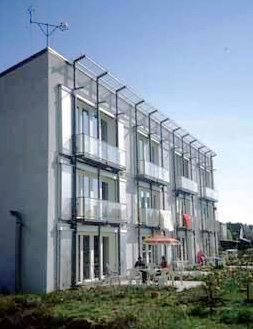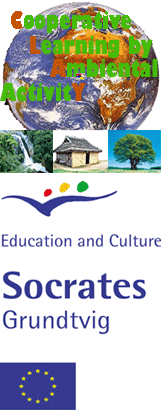|
|||||||||||||||||||||||||||||||||||||
|
|
Passive House Report (part 2) | ||||||||||||||||||||||||||||||||||||
|

PASSIVE HOUSE REPORT 2 PASSIVE HOUSES AND PASSIVE HOUSES IN THE MEDITERRANEAN CLIMATE What makes a building a Passive House? No further elements are required in addition to a conventional building: it is only necessary to construct the components that are used in any case (floors, outer walls, windows, roofs and ventilation) to high quality standards. 
A Passive House, however, requires substantially better thermal insulation as a low-energy house standard. The remaining heat requirement of the Passive House is not zero, but so low that a conventional separate heating system is not necessary. The mechanical ventilation system with heat recovery can heat the supply air. Table of supplemetary (please download the complete report) Aim of the “BASIC ELEMENTS” is to reduce the building`s annual demand for space heating to 15 kWh/(m2a). The supply air of the ventilation system can only transport limited heat. Just 10 W/m2 can be delivered to the supply air rooms. That will not be sufficient at all in conventional houses. But in a Passive House, the peak heat load requirement is extraordinarily low. The reason is the good thermal building envelope with maximum heating demand of 15 kWh/(m2a). Further on, the target of the Passive Houses is to keep the total primary energy requirement for space heating, domestic hot water and household appliances below 120 kWh/(m2a). This is lower by a factor of 2 to 4 than new standard houses across Europe. In the next Passive House reports you can read many more details about the basic elements. Particularly for Passive Houses in the Mediterranean Climate, to show how summer temperatures can be kept in a comfortable range without using regular air conditioning. Werner Friedl architect Mention of sources used: Website: Deutsches Passivhausinstitut, Darmstadt (www.passiv.de) Cepheus Proposal Summary, Deutsches Passivhausinstitut, Darmstadt Cepheus ECEEE, Jürgen Schnieders, Deutsches Passivhausinstitut, Darmstadt Cepheus-Projektinformationen Nr. 38, Abschlussbericht Juli 2001, Deutsches Passivhausinstitut, Darmstadt (Thermie-Program of EU BU/0127/97) (Thanks to Tom Lappas, Las Vegas, USA for proofreading. © unchanged copy is permitted, please give reference to the author) Please download the complete Passive House Report No. 2
|
|
|||||||||||||||||||||||||||||||||||


